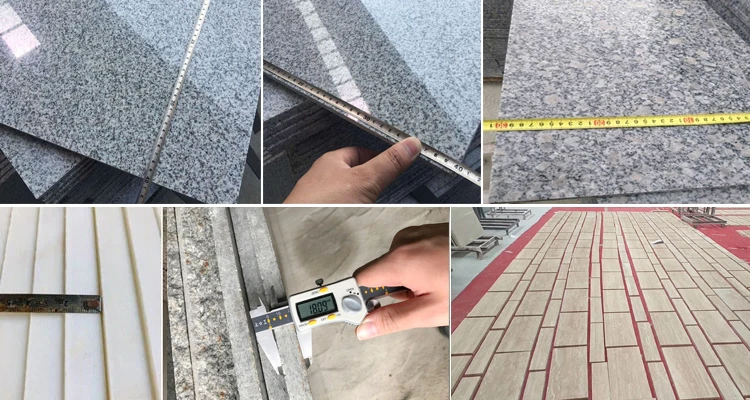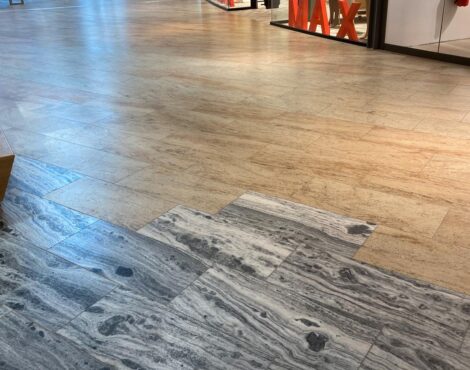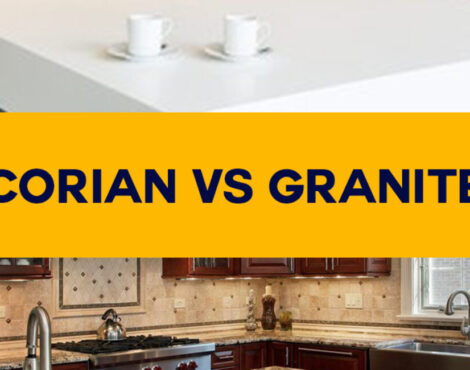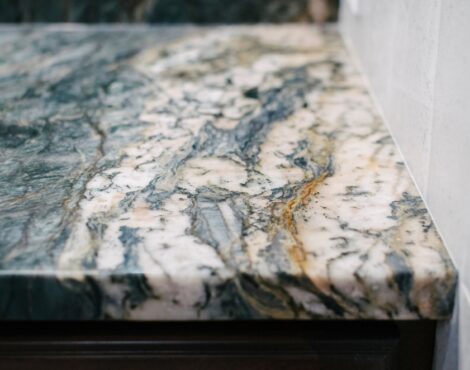Selecting the perfect granite for your project is a journey marked by choices, and the first and most crucial decision revolves around quality. Granite’s enduring appeal lies in its innate beauty and durability, making it a sought-after material for countertops, flooring, and various applications. However, the quality of granite can vary, posing challenges for those aiming to make the right investment. In this exploration, we delve into the best ways to assess granite quality, providing you with insights to navigate the intricate realm of granite selection and ensure a choice that harmonizes aesthetics with durability.
Certain crucial considerations must be taken into account when attempting to determine the quality of a granite slab are as follows:
Granite Quality Grades
The categorization of granite into distinct grades serves as a guide for consumers and professionals, providing insights into the quality and characteristics of the stone. Below is an overview of the typical attributes associated with each grade:
-
Commercial Grade Granite
Commercial grade granite is considered the entry-level or builder grade in the classification system. Commercial-grade granite stands out as the thinnest within its category. Often accompanied by some sort of backing or additional support, its sole thickness might not sufficient enough to endure heavy usage. Typically pre-fabricated, it’s prevalent in mid to low-cost units. Grade 1 Granite exhibits basic colours, simpler patterns, often offering numerous variations and notably irregular design patterns.
-
Standard Grande Granite
Standard granite comes in a wider range of patterns and colours than commercial grate granite, which has fewer choices. Whether it’s a plain material or veined granite, the colour dispersion and design patterns are far more consistent than commercial-grade granite. Sold as thicker slabs, it resembles the hardness and durability synonymous with granite.
-
Premium Grade or Grade 3 or Group/Type A Granite:
Premium granite, classified as Grade 3, stands out as the highest quality granite. Acknowledged for its rarity and uniqueness, Grade 3 granite boasts distinctive veins, patterns, and mineral deposits, ensuring that each slab is truly one-of-a-kind.
Patterns in premium grade granite exhibit a diverse range, featuring intricate veining, swirls, and other visually captivating elements. This variety contributes significantly to the stone’s elevated aesthetic value. Although Grade 3 granite is commonly chosen for premium projects owing to its distinctive designs and characteristics, it also finds application in high-end residential and commercial spaces. The higher pricing of Grade 3 granite is justified by its rarity, unique features, and enhanced visual appeal.
ALSO READ: Group A Granite (Type A Granite): Factors Behind the Price
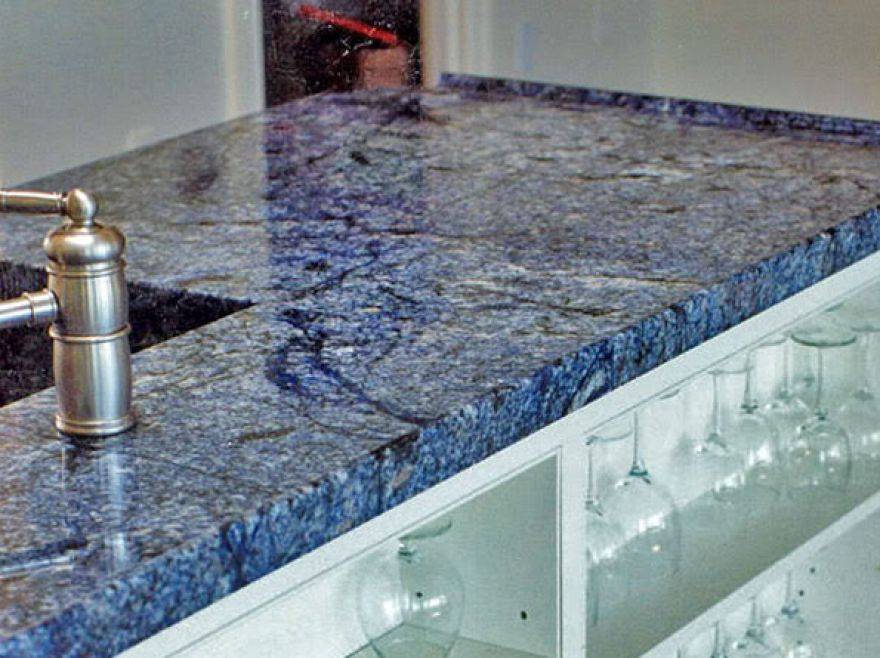
After determining the grade of granite that suits your needs, the next crucial step involves evaluating its physical and aesthetic qualities. Among these attributes, the quality of the granite’s polishing stands out as the first noticeable feature.
Granite Quality Check for Polishing
The polish plays a crucial role in enhancing the finish and overall aesthetic appeal of a slab. An impeccable polish is essential for maintaining the perfection of the stone’s surface. Granite suppliers employ a professional polish scale to assess the quality of the surface finish. In the absence of specialized tools such as a polish meter, a quick and tool-free test can be conducted:
1. Run your hand over the granite surface; it should exhibit a glass-like smoothness without any rough or uneven areas for a high-quality polish.
2. Evaluate the polish by observing how well it reflects light; a superior polish will yield increased light reflection, creating a mirror-like surface.
3. Ensure uniform light reflection by holding the granite slab at various angles in front of a light source. A top-notch polish will result in a clear and sharp reflection.
By employing these tactile and visual assessments, one can effectively gauge the quality of the granite’s polish without the need for specialized tools.
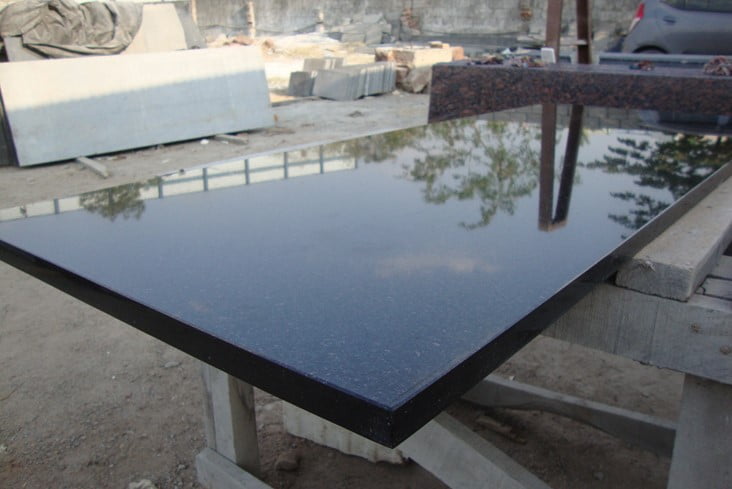
Granite Quality Check for Slab Thickness?
If you plan to use granite slabs for your flooring or kitchen countertop, ensuring consistent thickness is essential for achieving a uniform level. The following guidelines offer methods to verify the thickness of granite slabs:
1. When acquiring granite slabs, inquire about their thickness directly from the supplier or manufacturer, as they should furnish you with accurate information regarding the slab thickness.
2. Utilize either an electronic or manual caliper for a precise measurement of the granite slab’s thickness. Place the caliper on the slab’s edge and gently close the jaws to determine the thickness. To ensure accuracy, ensure the caliper is correctly zeroed before taking measurements.
Granite Countertop Thickness: Perfect Granite Thickness?
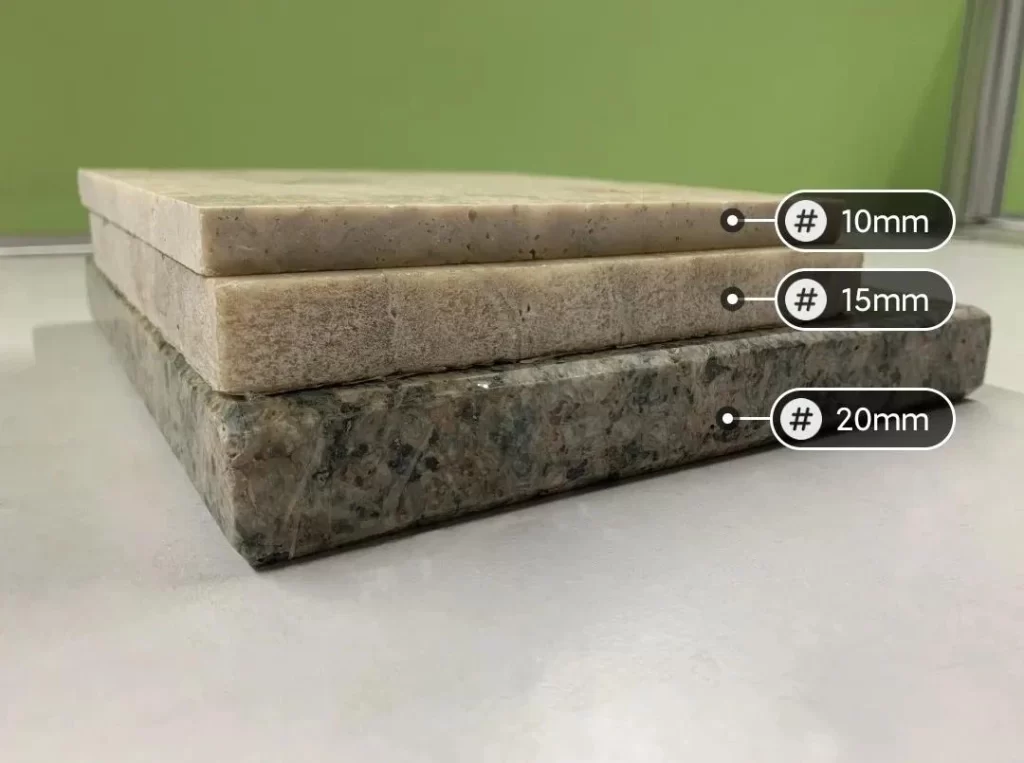
Granite Quality Check for Porosity
To ascertain the porosity of granite slabs, which refers to their capacity to absorb water, a simple, tool-free test can be employed. Despite the expectation that superior granite should be less porous, certain varieties may exhibit surprising levels of porosity. Here’s a non-invasive test:
Water Test: Sprinkle a few water drops on the granite surface. A high-quality polish should result in water beading up and remaining on the surface rather than being absorbed into the stone.
Acid Test: Although it’s advised to avoid conducting this test directly on the actual granite slab, you can test a small sample. Place a drop of a mild acid, such as lemon juice or vinegar, on the surface and observe for any etching or dulling. High-quality granite should remain unaffected by weak acids.
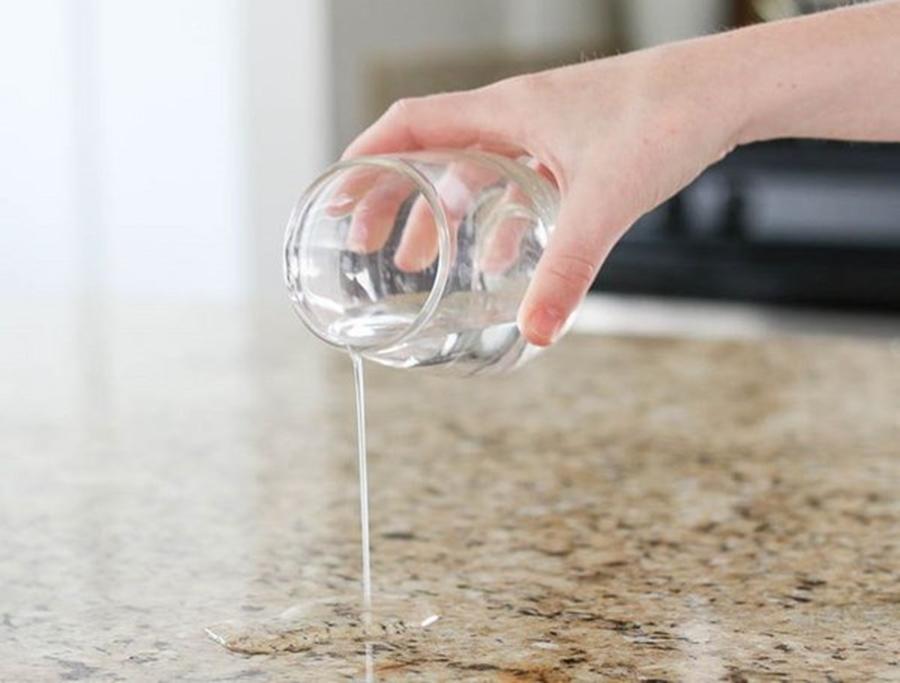
Granite Quality Check for Bends
Examining the curves or bent sections in granite slabs is essential for ensuring the quality and structural integrity of the material, particularly in applications like countertops, flooring or architectural features where a smooth and consistent appearance is crucial. Here’s a method for assessing bends in granite slabs:
To effectively check for bends in granite slabs, place two slabs with their polished sides facing each other and lean them towards one another. This technique involves selecting two granite slabs and positioning them adjacent, ensuring that their polished edges align to create a straight line when viewed from the side. Gently tilting one slab towards the other reveals any presence of a bend or curvature, evident by a visible gap or misalignment where they should seamlessly meet. The size of the gap can indicate the severity of the bend. A careful observation can help identify the specific slab causing the gap, allowing for the detection of any curvature.
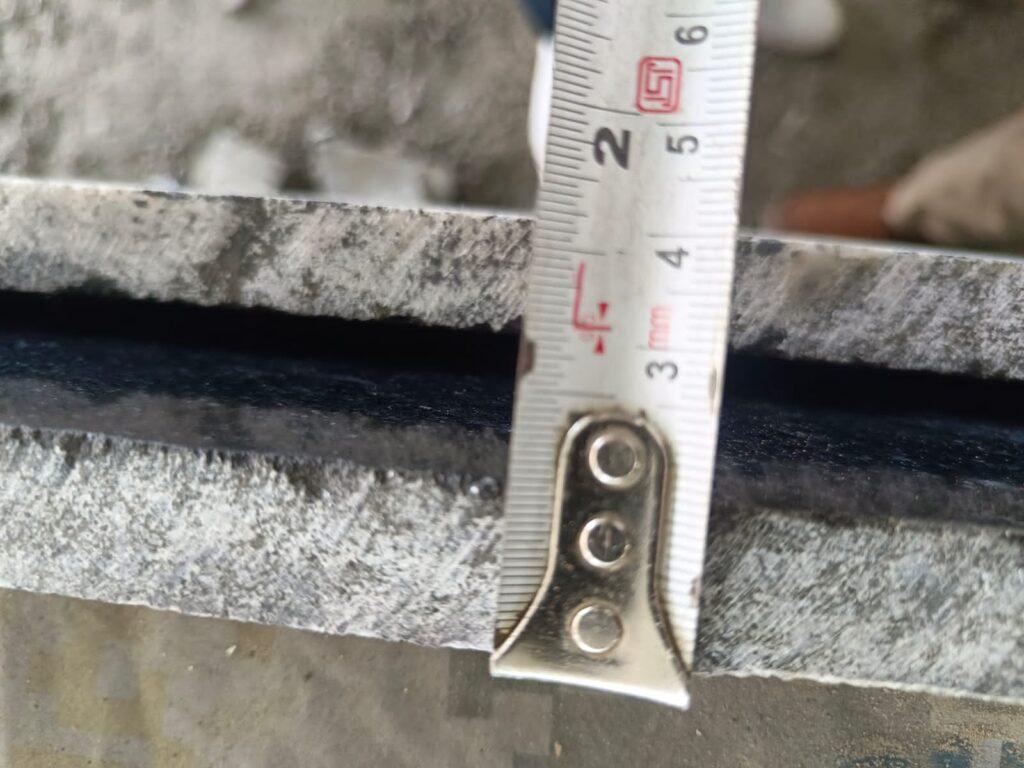
Alternative Method for Bend Inspection: Greater Accuracy
Another more method, which is more accurate method for checking the bend in granite slabs involves technique that is highly effective but requires careful handling of the granite slabs. The steps for this method are as follows:
- Prepare the Granite Slab: Lay the granite slab on a hard, level, and stable surface. Ensure that the slab is well-supported and doesn’t wobble.
- Use Fishing Line (Thread): Take a piece of fishing line or a taut thread and place it along the length and height sides of the granite slab. These lines should be parallel to each other.
- Inspect for Gaps: Carefully examine the area beneath the fishing lines. If there is any gap or space between the lines and the surface of the granite slab, it indicates a bend in the slab. The larger the gap, the more pronounced the bend.
- Evaluate the Entire Lot: If a bend is detected in one slab using this method, it’s advisable to inspect other slabs from the same lot or material. If all the slabs from the same lot exhibit a similar issue, it suggests that the entire lot may have a problem with bends.
For longer slabs say above 300 cm, a tolerance of 1 to 2.5 mm is generally considered acceptable within the industry standards. The tolerance takes into account the natural variations in the stone and the limitations of the machinery used during the cutting and finishing processes.
It’s important to communicate your tolerance requirements with your supplier or granite manufacturer so that they can provide granite slabs that meet your specific needs.
Other Granite Quality Checks
Although the B2B buyers’ lists above were more pertinent, consumers should take note of the additional quality checks given below.
- Colour Consistency
Verify that the color of the granite is consistent across the entire slab. Inconsistencies in color can affect the overall aesthetic when multiple slabs are used together. - Crack and Chip Inspection
Thoroughly inspect the entire surface of the granite for any cracks or chips. Even minor imperfections can compromise the structural integrity and visual appeal of the stone. - Stain Resistance:
Perform a stain resistance test by placing a small amount of common household liquids (such as coffee or oil) on the granite surface and observing if it leaves a stain. High-quality granite should resist staining.
By including these additional checks in your assessment, you can further ensure the overall quality and suitability of the granite for your specific project.
Conclusion
In conclusion, ensuring the quality of granite is a critical step in any construction or design project where this natural stone is utilized. From assessing the polish and thickness to checking for porosity and examining bends, a comprehensive quality check ensures that the granite meets the desired standards for aesthetics, durability, and functionality.
By employing simple yet effective methods, such as the water test, acid test, and visual inspection for bends, one can confidently evaluate the integrity of the granite slabs. These assessments not only contribute to the overall visual appeal of the finished product but also guarantee that the granite will perform well in various applications, be it as a countertop, flooring, or architectural element.
Investing time and attention into the quality check process pays off in the long run, as it helps avoid potential issues and ensures that the chosen granite slabs will stand the test of time. Whether in residential or commercial spaces, the commitment to quality in granite selection is a testament to a meticulous and thoughtful approach to design and construction.
Stone Galleria
Expect more than just materials from us – expect a partnership built on reliability and responsiveness. We understand the unique needs of the commercial enterprises, and we are dedicated to providing reliable and cost-effective supply chain management.
Stone Galleria is a leading and prominent manufacturer, supplier, and exporter of Granite, Sandstone and quartzite, which can be manufactured and processed to your specifications for dimension, thickness, and multiple finishes.
Take the first step toward transforming your operations by requesting a free quote today. Simply fill up our inquiry form, and we will promptly get back to you.

